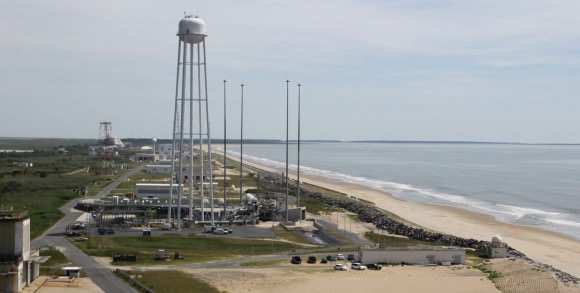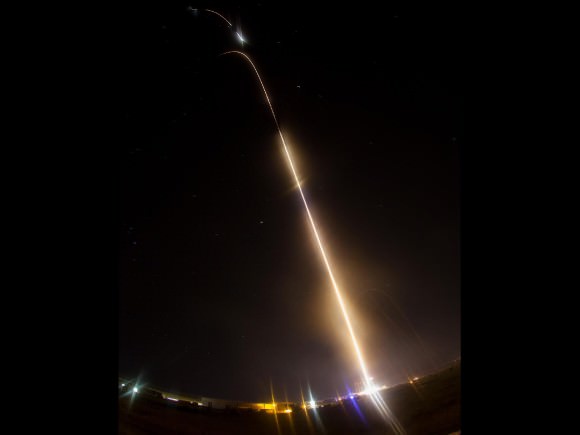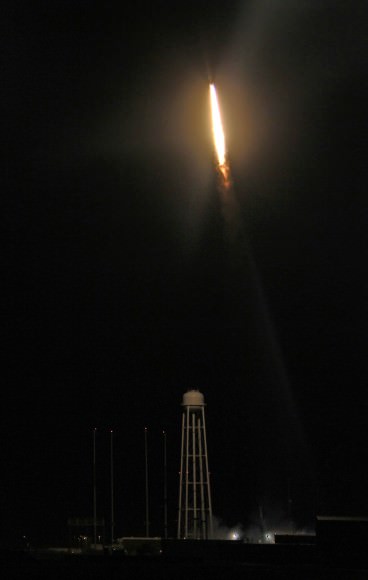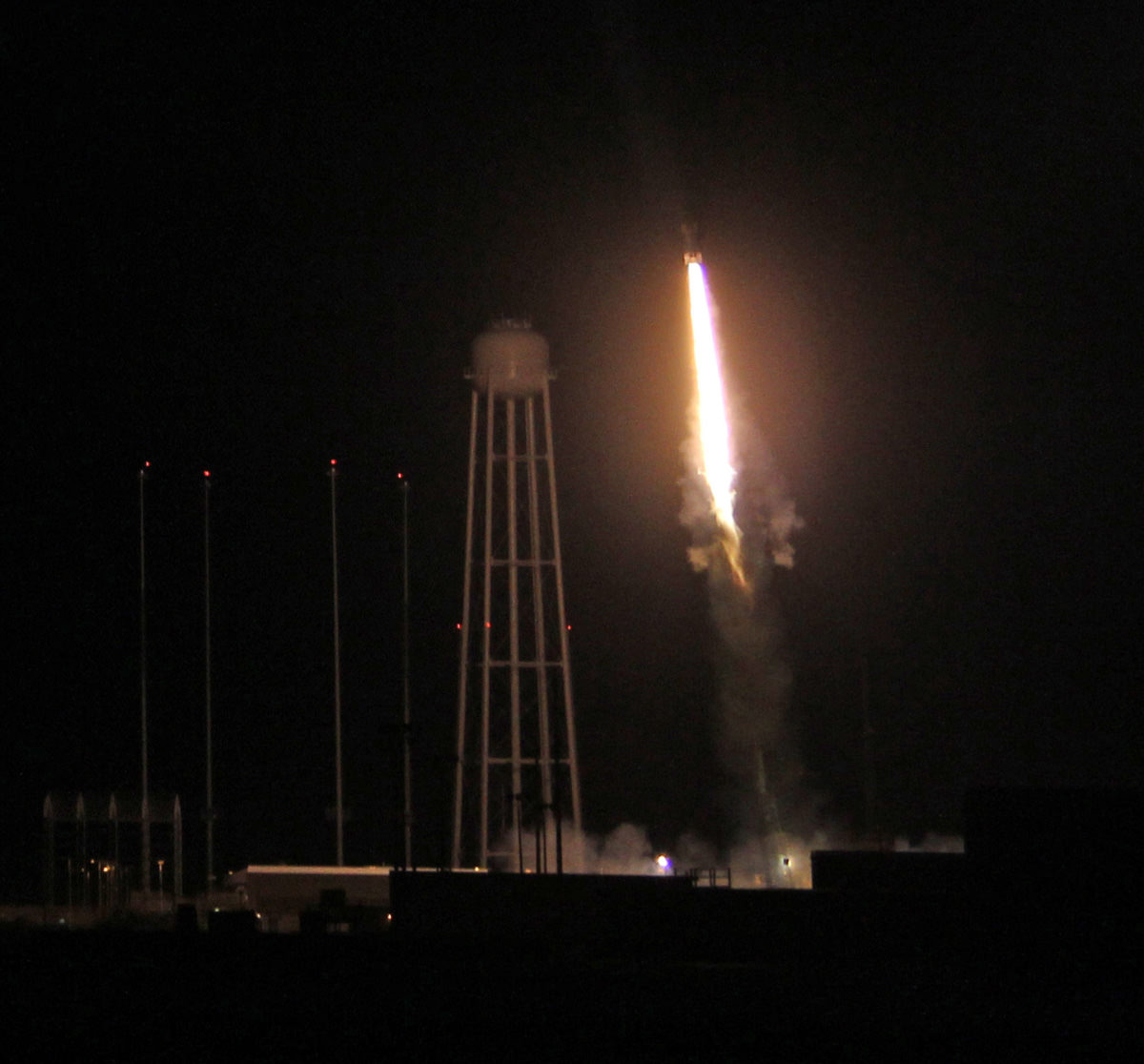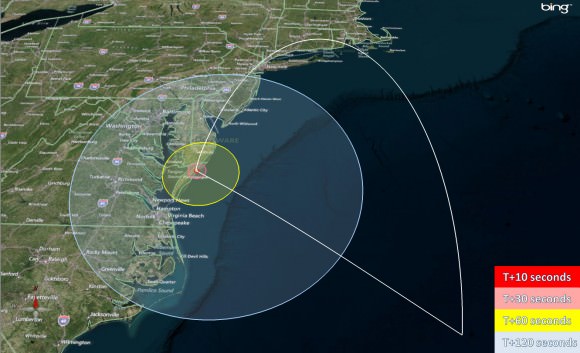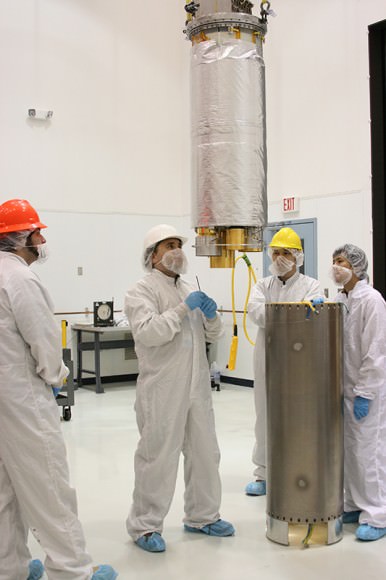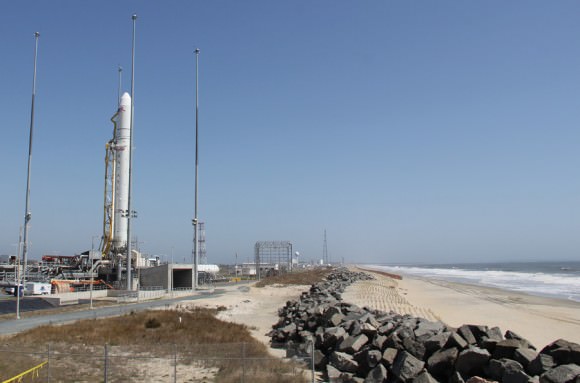Night time blast off of 4 stage NASA Black Brant XII suborbital rocket at 11:05 p.m. EDT on June 5, 2013 from the NASA Wallops Flight Facility carrying the CIBER astronomy payload to study when the first stars and galaxies formed in the universe. The Black Brant soars above huge water tower at adjacent Antares rocket launch pad at NASA Wallops. Credit: Ken Kremer- kenkremer.com
Updated with more photos[/caption]
WALLOPS ISLAND, VA – The spectacular night time launch of a powerful Black Brant XII suborbital rocket from NASA’s launch range at the Wallops Flight Facility on Virginia’s Eastern Shore at 11:05 p.m. June 5 turned darkness into day as the rocket swiftly streaked skyward with the Cosmic Infrared Background ExpeRiment (CIBER) on a NASA mission to shine a bright beacon for science on star and galaxy formation in the early Universe.
A very loud explosive boom shook the local launch area at ignition that was also heard by local residents and tourists at distances over 10 miles away, gleeful spectators told me.
“The data looks good so far,” Jamie Bock, CIBER principal investigator from the California Institute of Technology, told Universe Today in an exclusive post-launch interview inside Mission Control at NASA Wallops. “I’m very happy.”
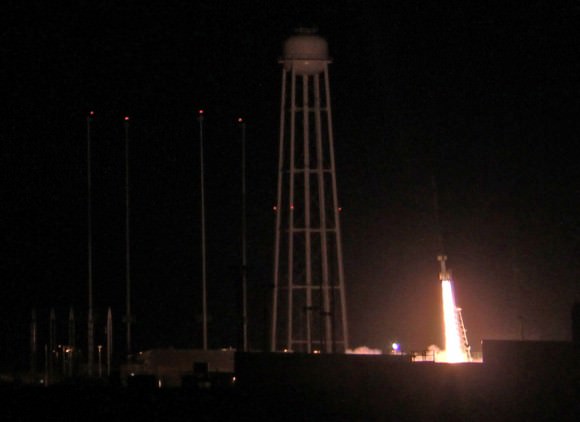
The four stage Black Brant XII is the most powerful sounding rocket in America’s arsenal for scientific research.
“I’m absolutely thrilled with this launch and this is very important for Wallops,” William Wrobel, Director of NASA Wallops Flight Facility, told me in an exclusive interview moments after liftoff.
Wallops is rapidly ramping up launch activities this year with two types of powerful new medium class rockets – Antares and Minotaur V- that can loft heavy payloads to the International Space Station (ISS) and to interplanetary space from the newly built pad 0A and the upgraded, adjacent launch pad 0B.
“We have launched over 16,000 sounding rockets.”
“Soon we will be launching our first spacecraft to the moon, NASA’s LADEE orbiter. And we just launched the Antares test flight on April 21.”
I was delighted to witness the magnificent launch from less than half a mile away with a big group of cheering Wallops employees and Wallops Center Director Wrobel. See my launch photos and time lapse shot herein.
Everyone could hear piercing explosions as each stage of the Black Brant rocket ignited as it soared to the heavens to an altitude of some 358 miles above the Atlantic Ocean.
Seconds after liftoff we could see what looked like a rain of sparkling fireworks showing downward towards the launch pad. It was a fabulous shower of aluminum slag and spent ammonium perchlorate rocket fuel.
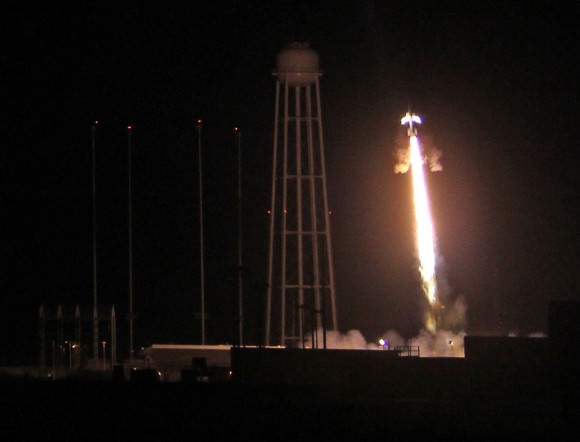
The awesome launch took place on a perfectly clear night drenched with brightly shining stars as the Atlantic Ocean waves relentlessly pounded the shore just a few hundred feet away.
The rocket zoomed past the prominent constellation Scorpius above the Atlantic Ocean.
In fact we were so close that we could hear the spent first stage as it was plummeting from the sky and smashed into the ocean, perhaps 10 miles away.
After completing its spectral collection to determine when did the first stars and galaxies form and how brightly did they shine burning their nuclear fuel, the CIBER payload splashed down in the Atlantic Ocean and was not recovered.
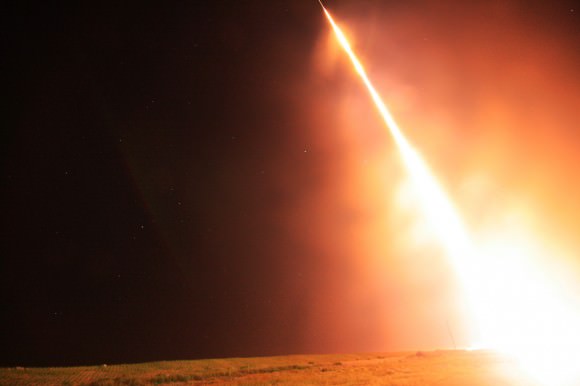
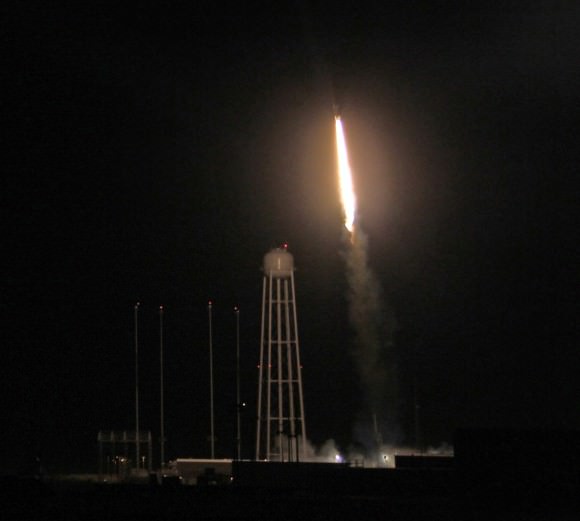
NASA said the launch was seen from as far away as central New Jersey, southwestern Pennsylvania and northeastern North Carolina.
One of my astronomy friends Joe Stieber, did see the launch from about 135 miles away in central New Jersey and captured beautiful time lapse shots (see below).
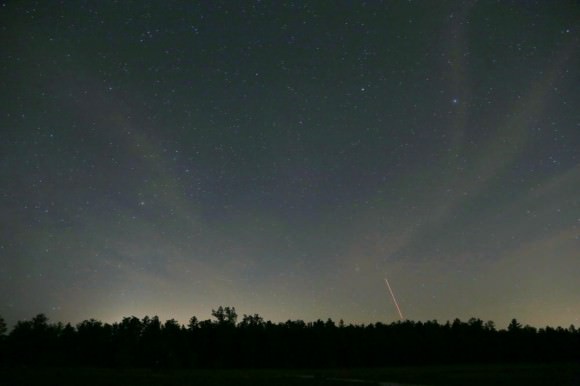
Everything with the rocket and payload went exactly as planned.
“This was our fourth and last flight of the CIBER payload,” Bock told me. “We are still analyzing data from the last 2 flights.”
“CIBER first flew in 2009 atop smaller sounding rockets launched from White Sands Missile Range, N.M. and was recovered.”
“On this flight we wanted to send the experiment higher than ever before to collect more measurements for a longer period of time to help determine the brightness of the early Universe.”
CIBER is instrumented with 2 cameras and 2 spectrometers.
“The payload had to be cooled to 84 Kelvin with liquid nitrogen before launch in order for us to make the measurements,” Bock told me.
“The launch was delayed a day from June 4 because of difficulty both in cooling the payload to the required temperature and in keeping the temperature fluctuations to less than 100 microkelvins,” Bock explained
The CIBER experiment involves scientists and funding from the US and NASA, Japan and South Korea.
Bock is already thinking about the next logical steps with a space based science satellite.
Space.com has now featured an album of my CIBER launch photos – here
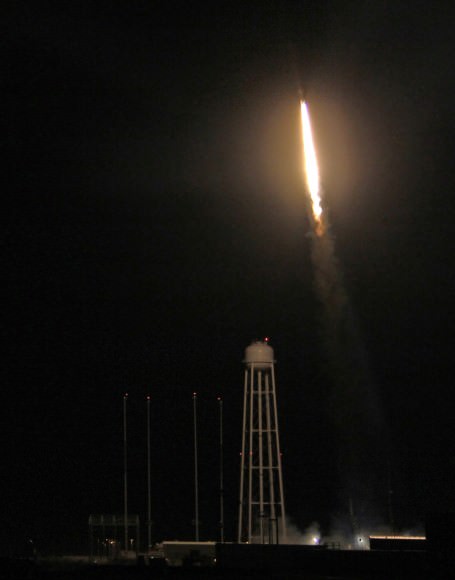
And don’t forget to “Send Your Name to Mars” aboard NASA’s MAVEN orbiter- details here. Deadline: July 1, 2013
…………….
Learn more about Conjunctions, Mars, Curiosity, Opportunity, MAVEN, LADEE and NASA missions at Ken’s upcoming lecture presentations
June 11: “Send your Name to Mars on MAVEN” and “LADEE Lunar & Antares Rocket Launches from Virginia”; NJ State Museum Planetarium and Amateur Astronomers Association of Princeton (AAAP), Trenton, NJ, 730 PM.
June 12: “Send your Name to Mars on MAVEN” and “LADEE Lunar & Antares Rocket Launches from Virginia”; Franklin Institute and Rittenhouse Astronomical Society, Philadelphia, PA, 8 PM.
June 23: “Send your Name to Mars on MAVEN” and “CIBER Astro Sat, LADEE Lunar & Antares Rocket Launches from Virginia”; Rodeway Inn, Chincoteague, VA, 8 PM
